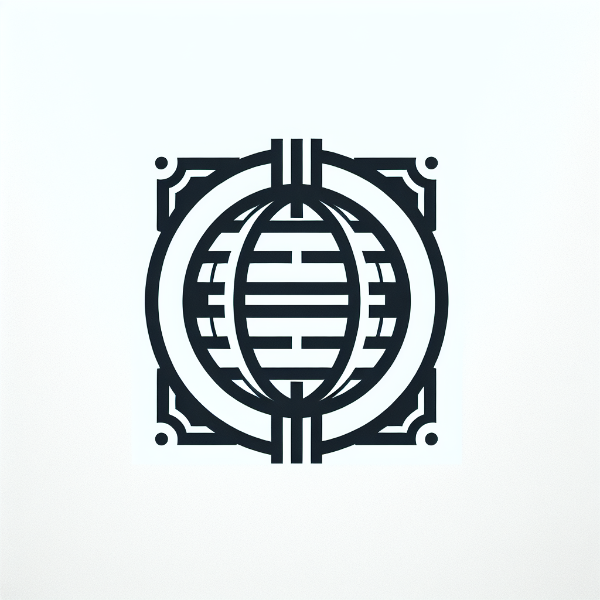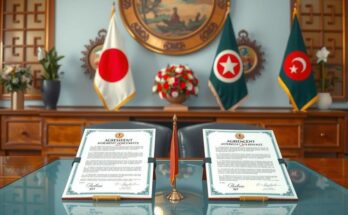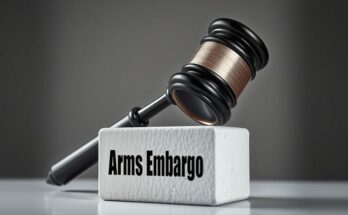The M23 rebel group has captured Goma in the DRC and is advancing towards Bukavu, causing significant humanitarian crisis and displacing over a million people. Led by ethnic Tutsis, M23 aims to protect their community from Hutu militia attacks. The conflict is rooted in complex historical grievances and has substantial global implications due to the DRC’s resource wealth, particularly in minerals critical for technology. The international response is challenged by accusations of regional interference, particularly from Rwanda.
The M23 rebel group has gained significant ground in the Democratic Republic of Congo (DRC), having seized the strategic city of Goma and now advancing towards Bukavu, exacerbating an already critical humanitarian crisis. This escalation has displaced over one million residents and overwhelmed local hospitals, amid reports of bodies lying in the streets as individuals flee to escape the violence.
The M23 rebels, predominantly composed of ethnic Tutsis, claim they are defending their people from assaults by Hutu militias, particularly the Democratic Forces for the Liberation of Rwanda (FDLR). The group’s name stems from a failed peace agreement signed on March 23, 2009, which promised political integration and representation, promises they assert have not been fulfilled by the Congolese government, provoking them to resume armed conflict in 2022.
On the eve of M23’s control over Goma, the rebels faced initial resistance but gained full control of the city by Wednesday morning. Reports indicated key points, including the airport, were taken after surrendering government soldiers and allied militias. M23 spokesperson Corneille Nangaa stated that the group intends to govern Goma while simultaneously advancing south towards Bukavu.
Goma’s strategic significance is underscored by its position as a gateway to the DRC’s rich mineral resources, including coltan, which is vital for technology manufacturing. The control of Goma provides M23 with enhanced access to trade routes and economic power, further consolidating their influence over the region.
The longstanding conflict in eastern DR Congo spans over three decades, with over 100 armed groups vying for control over vast mineral wealth. Military interventions by Rwanda and Uganda during the late 1990s have contributed to ongoing instability, culminating in significant loss of life and continued strife over power and resources.
Accusations from the Congolese government and international entities, such as the United Nations, suggest that Rwanda is backing M23. Despite these claims, Rwanda has denied involvement, labeling its actions as defensive and blaming the DRC for collaborating with the FDLR.
The conflict’s repercussions extend beyond regional borders due to the DRC’s global role as a supplier of minerals essential for electronics. Disruptions from the ongoing violence threaten supply chains, potentially contributing to rising costs for technology products worldwide.
Internationally, the UN peacekeeping mission (MONUSCO) has provided support to the Congolese army to manage the M23 threat; however, plans for withdrawal have been halted in light of the deteriorating security environment. Following Goma’s fall, UN forces evacuated staff while pro-government individuals sought shelter with peacekeepers. In the current climate, the responses of both local and regional military efforts have been challenged by increased resistance from M23.
Calls from nations such as the United States and France urge Rwanda to cease its support for M23, as the situation continues to develop with the rebels now holding Goma. The next phases of the conflict will critically impact regional stability and the potential escalation towards Bukavu.
The M23 rebellion in the DRC has deep historical and political roots, primarily linked to ethnic tensions arising from the aftermath of the Rwandan genocide. The conflict has persisted for over 30 years, complicated by the complex interplay of local and foreign armed groups, ethnic strife, and geopolitical interests, particularly concerning access to valuable mineral resources. Goma’s occupation by M23 poses significant threats not only to local stability but also to global supply chains tied to technology manufacturing, highlighting the international dimensions of this conflict.
As the M23 rebels advance in the Democratic Republic of Congo, control of strategic locations like Goma raises grave humanitarian concerns and poses questions about regional stability. The international community’s attention is increasingly focused on the implications of these developments on global supply chains and the ongoing humanitarian crisis. The role of regional actors, particularly Rwanda, continues to complicate the efforts to resolve the conflict, emphasizing the necessity for international oversight and intervention.
Original Source: www.business-standard.com




